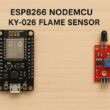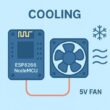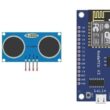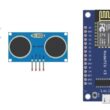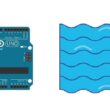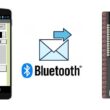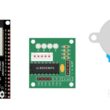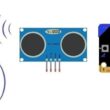Control four LEDs by ESP32 card
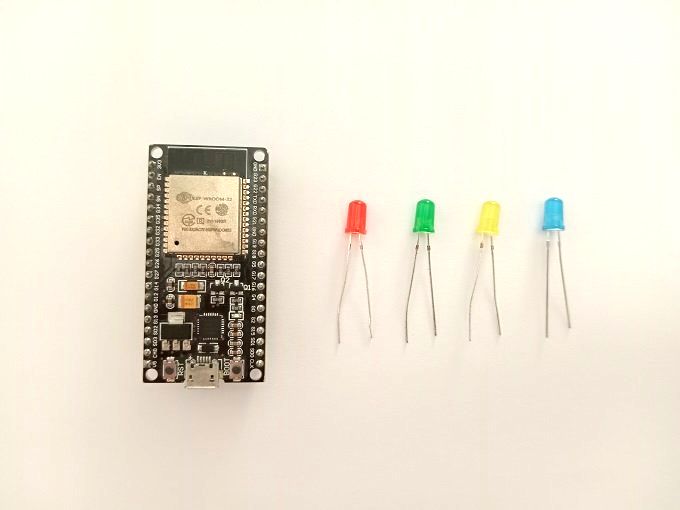
Tutorial plan
1- Role of LEDs in robotics
2- The components needed to control four LEDs by ESP32
3- Mounting the ESP32 board with four LEDs
4- Lighting foor LEDs by the ESP32 card
5- Turn on foor LEDs alternately
Role of LEDs in robotics
LEDs (Light-Emitting Diodes) play various roles in robotics, offering both functional and aesthetic benefits. Here are some common roles of LEDs in robotics:
Indication and Status Feedback: LEDs are often used to provide visual feedback in robotics systems. They can be programmed to indicate the status of different components or subsystems. For example, an LED might indicate whether the robot is powered on, if a specific sensor is activated, or if a task or action is in progress.
Object Detection and Sensing: In certain robotic applications, LEDs are utilized as light sources for object detection and sensing. For instance, infrared LEDs can be used in conjunction with infrared sensors to enable proximity sensing or line following. By emitting light and measuring the reflected or blocked signals, the robot can detect and navigate its environment.
Communication and Signaling: LEDs can be employed as part of a communication system between robots or between a robot and humans. By using different colors, blinking patterns, or sequences, LEDs can convey specific messages or signals. For example, a robot might use LEDs to signal that it is ready to receive commands, indicate a specific error condition, or display a warning.
Decorative and Aesthetic Purposes: LEDs can also serve as decorative elements in robotics. They can be integrated into a robot's design to enhance its appearance or create visual effects. This is particularly common in educational or hobbyist robotics projects, where LEDs are used to make the robot more visually appealing or to give it a distinctive look.
Safety and Visibility: In certain robotic applications, LEDs are employed to enhance safety and improve visibility. For instance, robots operating in low-light environments or hazardous areas can be equipped with bright LEDs to make them more visible to humans or to indicate their presence.
The components needed to control foor LEDs by ESP32 card
To control three LEDs using a Micro:bit, you will need the following components:
The ESP32 card: is a popular microcontroller development board that features built-in Wi-Fi and Bluetooth connectivity. It is widely used for various Internet of Things (IoT) projects and prototyping.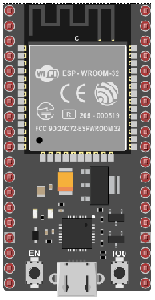
LEDs: You will need three LEDs of your choice. These can be regular LEDs or RGB LEDs, depending on your project requirements.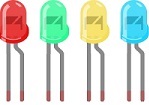
Resistors: LEDs require current-limiting resistors to prevent them from burning out. The value of the resistor depends on the forward voltage and current rating of the LEDs. A typical value for a standard LED is around 220-470 ohms.
Jumper wires: You will need jumper wires to connect the Micro:bit's GPIO pins to the LEDs and resistors.
Breadboard (optional): If you prefer to use a breadboard for easy prototyping and connection, you can use it to connect the LEDs, resistors, and jumper wires.
With these components, you can connect the LEDs to the ESP32's GPIO pins using the resistors to limit the current. You can then program the Micro:bit to control the GPIO pins and turn the LEDs on or off.
Mounting the ESP32 card with foor LEDs
Here's a step-by-step guide to mounting the ESP32 card with four LEDs:
Prepare the ESP32 board: Ensure that your ESP32 board is in good working condition and has the necessary headers or pins for connecting the LEDs. If your board doesn't have pre-soldered pins, you may need to solder them on yourself.
1- Connect the LEDs: Take your LEDs and identify their anode (longer leg) and cathode (shorter leg). Connect the anode of each LED to a separate GPIO (General Purpose Input/Output) pin on the ESP32 board. Use the current-limiting resistors between the cathode of each LED and ground to prevent excessive current flow.
2- Set up the circuit: If using a breadboard, place the ESP32 board on one side of the breadboard and connect the LEDs and resistors on the other side. Ensure that each LED's anode is connected to a separate GPIO pin on the board and the cathode is connected to the corresponding resistor and then to the ground rail of the breadboard.
3- Wire the connections: Use jumper wires to make the necessary connections between the ESP32 board, LEDs, and resistors. Connect the anode of each LED to its respective GPIO pin and connect the cathodes to the resistors and then to the ground.
4- Code the LED control: Write a program in your preferred programming language (such as Arduino IDE or MicroPython) to control the LEDs. You can use the GPIO pins connected to the LEDs as output pins and control them using the programming language's syntax.
5- Upload the code: Compile and upload the code to your ESP32 board using the appropriate software and method for your chosen programming language and IDE.
6- Test the setup: Once the code is uploaded successfully, power on the ESP32 board. Your program should control the LEDs based on the logic you implemented in the code.
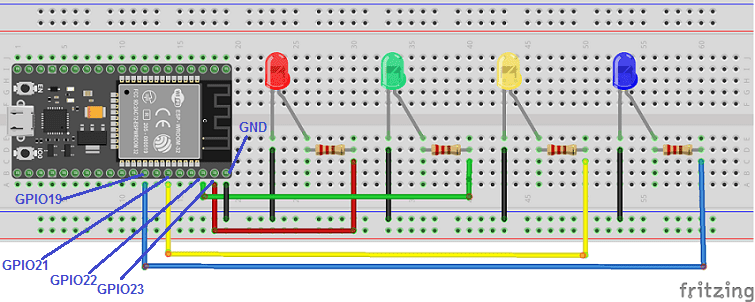
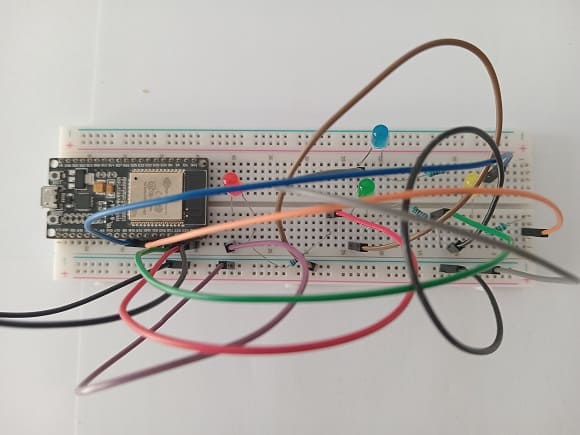
Lighting foor LEDs by the ESP32 card
To light four LEDs using an ESP32 board Write the MicroPython code:
|
1 2 3 4 5 6 7 8 9 10 |
from machine import Pin # Define the GPIO pins for each LED pin_led_red = Pin(23, Pin.OUT) pin_led_green = Pin(22, Pin.OUT) pin_led_yellow = Pin(21, Pin.OUT) # Turn on the three LEDs pin_led_red.value(1) pin_led_green.value(1) pin_led_yellow.value(1) |
Turn on foor LEDs alternately by the ESP32 card
To alternately light foor LEDs using an ESP32 board and MicroPython, you can use a loop and control the state of the LEDs based on the iteration. Here's an example code that demonstrates the alternating lighting:
|
1 2 3 4 5 6 7 8 9 10 11 12 13 14 15 16 17 18 19 20 21 22 23 24 25 |
from machine import Pin # Define the GPIO pins for each LED pin_led_red = Pin(23, Pin.OUT) pin_led_green = Pin(22, Pin.OUT) pin_led_yellow = Pin(21, Pin.OUT) pin_led_blue = Pin(19, Pin.OUT) while True: pin_led_red.value(1) #turn on red LED time.sleep(1) pin_led_red.value(0) #turn off red LED pin_led_green.value(1) #turn on green LED time.sleep(1) pin_led_green.value(0)#turn off green LED pin_led_yellow.value(1) #turn on yellow LED time.sleep(1) pin_led_yellow.value(0) #turn off yellow LED pin_led_blue.value(1) #turn on blue LED time.sleep(1) pin_led_blue.value(0) #turn off blue LED |
In this code, while True turns on each LED one at a time for 1 second before turning it off and moving to the next LED.


